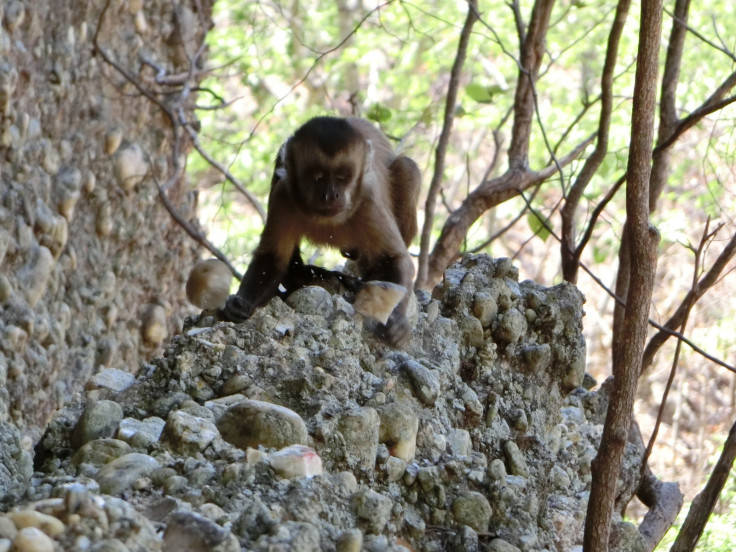Capuchin monkeys create sharp tools - just as prehistoric humans did millions of years ago
By pounding two stones against one another, the monkeys create sharp-edged flakes.
Humans are not the only species capable of producing sharp-edged tools, scientists have discovered. In Brazil, wild capuchin monkeys appear to deliberately break stones, and this process produces sharpened flakes similar to that produced by our early ancestors millions of years ago.
Sharp-edged stone flakes are the earliest evidence of stone technology being used by humans. This ability to make stone tools has often been presented by paleoanthropologists as distinctively human. In the new study published in the journal Nature, scientists have discovered that wild-bearded capuchin monkeys make similar tools after conducting stone on stone percussion.
This is a very important discovery as it takes apart the theory that production of archaeologically visible cores and flakes is unique to the human lineage. However, if the action of hitting stones against one another appears to be intentional, capuchins do not seem to be consciously producing the tools.
Monkey behaviour
The scientists observed and filmed the monkeys in their natural habitat, the Serra da Capivara National Park in Brazil. After the animals left, they collected fragmented stones which had been used just before. Furthermore, they conducted surface surveys and archaeological sites in the same area.
Researchers traditionally use distinctive characteristics of flaked stone tools — such as sharp, cutting edges — to distinguish tools from naturally broken stones at archaeological sites. The stones they recovered here, immediately after the monkeys used them, looked very much like hominin tools produced by our early ancestors.

However, it is unclear whether capuchin monkeys are conscious of producing useful tools. They repeatedly pound one stone onto another, deliberately crushing the surface of both stones, yet they were not seen using the sharp edges of fractured tools to cut or scrape other objects.
More research will be needed to understand this monkey behaviour, and whether the breaking of stones serves a particular purpose. However, the findings can already inform scientists about the cognitive requirements for the emergence of stone tools – an interesting result in itself.
The scientists say the discovery does not mean the earliest stone tools discovered were not made by early humans, but it does raise questions about how this technology emerged in the archaeological record.
Study co-author Michael Haslam said: 'Our understanding of the new technologies adopted by our early ancestors helps shape our view of human evolution. The emergence of sharp-edged stone tools that were fashioned and hammered to create a cutting tool was a big part of that story. The fact that we have discovered monkeys can produce the same result does throw a bit of a spanner in the works in our thinking on evolutionary behaviour and how we attribute such artefacts. While humans are not unique in making this technology, the manner in which they used them is still very different to what the monkeys seem capable of."
© Copyright IBTimes 2025. All rights reserved.






















